NEWS
History and images of the Hubble Space Telescope
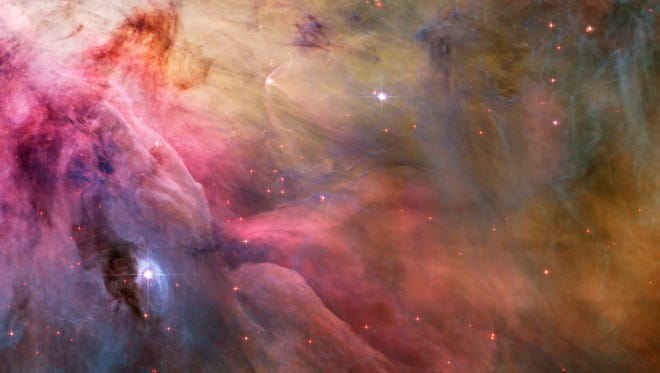
Close inspection of the 2006 Hubble Space Telescope color mosaic of the Orion Nebula (M42) reveals numerous treasures that reside within the nearby, intense star forming region.
NASA File Photo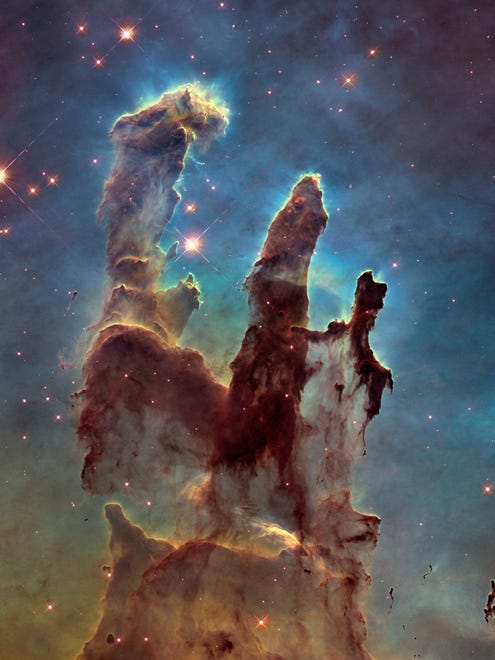
This Hubble Space Telescope shows one of its most iconic and popular images: the Eagle Nebulas Pillars of Creation. This image shows the pillars as seen in visible light, capturing the multi-colored glow of gas clouds, wispy tendrils of dark cosmic dust, and the rust-coloured elephants trunks of the nebulas famous pillars.
NASA Via AFP/Getty Images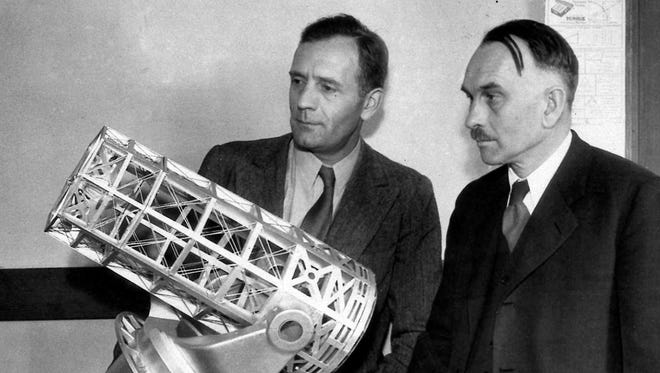
Dr. Edwin Hubble, and Dr. Richard Chase Tolman, right, a noted mathematician, inspect a model of a proposed 200-inch telescope for California. It was Hubble's observations and Tolman's calculations, that made Alfred Einstein change his mind about the Universe.
AP File Photo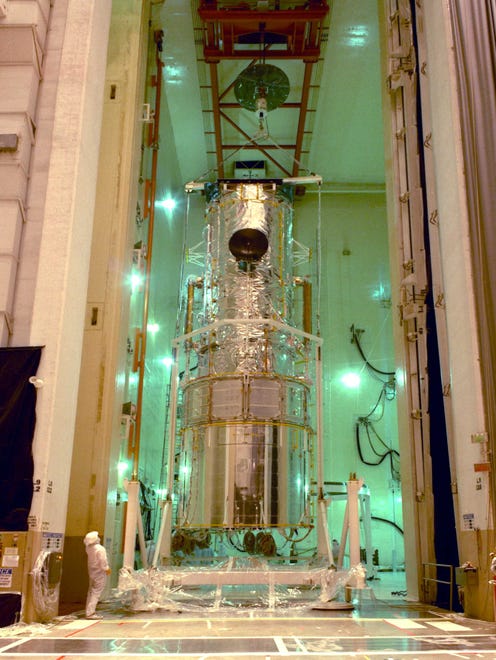
Hubble is lifted into the upright position in Lockheed Martin's acoustic vibration chamber in preparation for its 1990 launch aboard the Space Shuttle Discovery. The telescope was designed and built in the 1970s and 1980s, but its launch was delayed by the Space Shuttle Challenger disaster in 1986. A close look at this image reveals a portion of the 225 feet of handrails installed around the outside for astronauts to grip during repair mission spacewalks.
2006 NASA Photo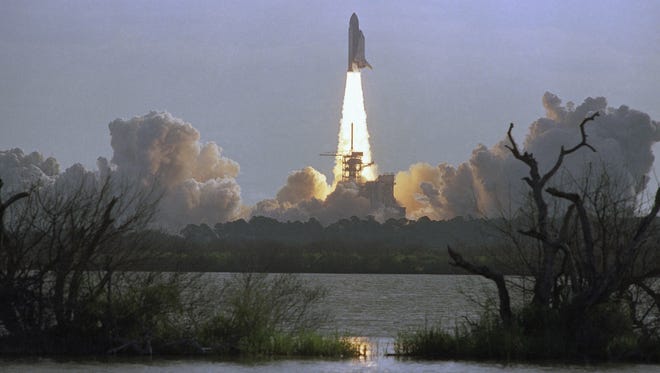
Space shuttle Discovery lifts off from Kennedy Space Center in Cape Canaveral, Fla. on April 24, 1990 carrying the Hubble Space Telescope.
Paul Kizzle, AP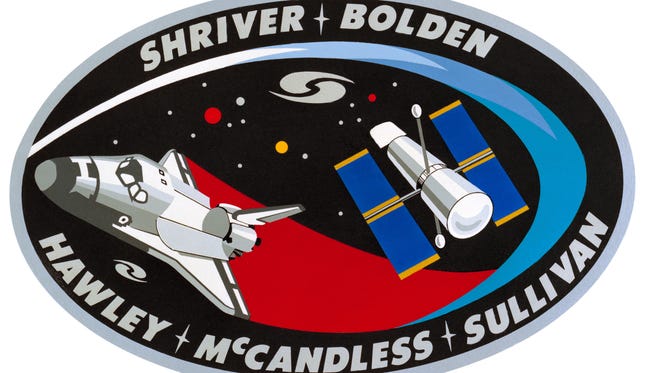
Space shuttle Discovery launched mission STS-31. The mission deployed the Hubble Space Telescope.
NASA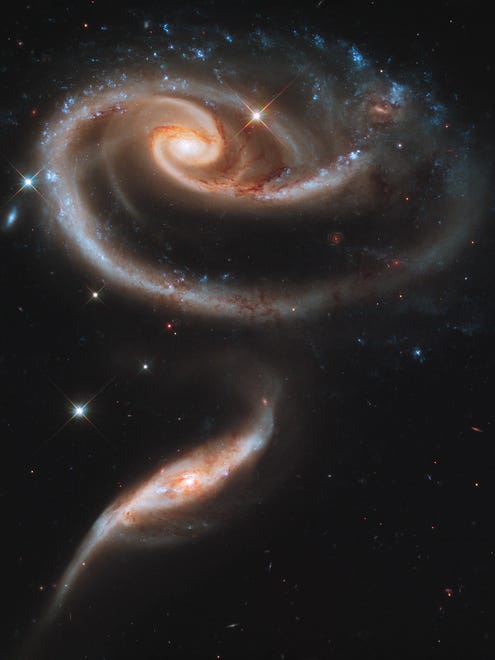
A "rose" made of galaxies highlights Hubble's 21st anniversary of deployment into space. Astronomers at the Space Telescope Science Institute in Baltimore, Md., pointed Hubble's eye to an especially photogenic group of interacting galaxies called Arp 273.
NASA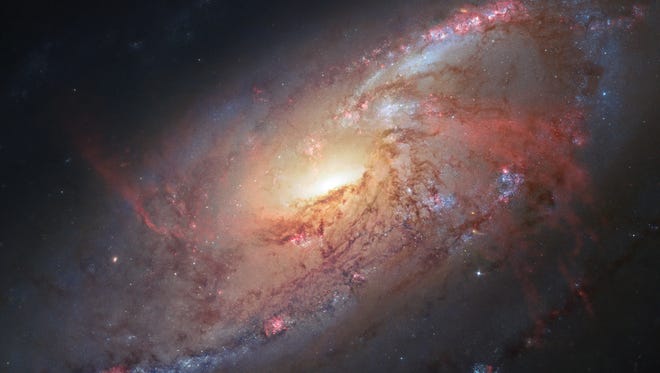
The Spiral Galaxy M106.
NASA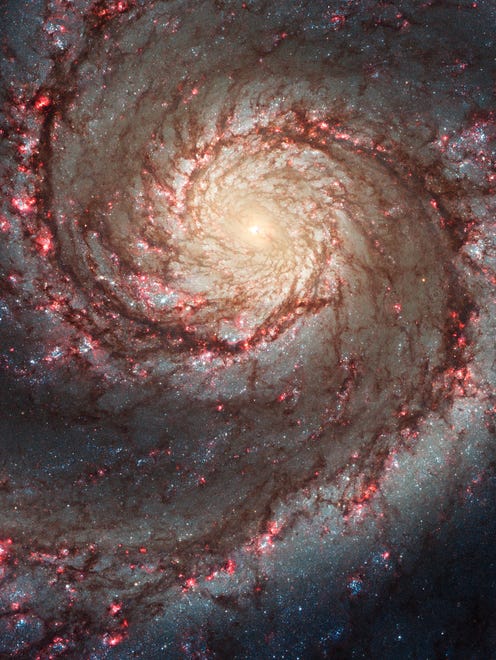
The Whirlpool Galaxy.
NASA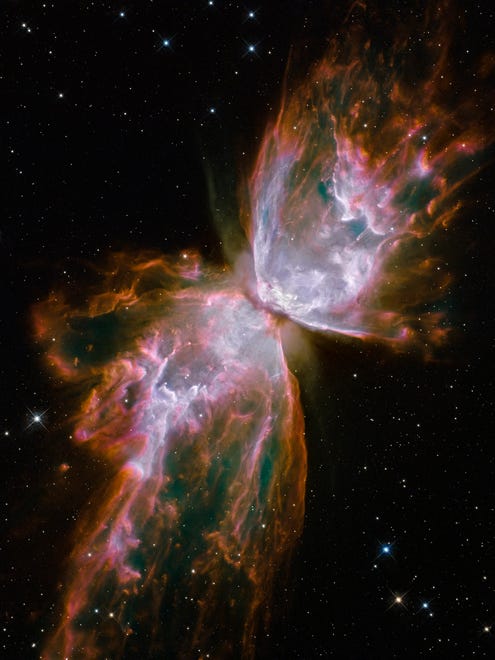
What resemble dainty butterfly wings are actually roiling cauldrons of gas heated to more than 36,000 degrees Fahrenheit. The Wide Field Camera 3, a new camera aboard NASA's Hubble Space Telescope, snapped this image of the planetary nebula, catalogued as NGC 6302, but more popularly called the Bug Nebula or the Butterfly Nebula. WFC3 was installed by NASA astronauts in May 2009, during a servicing mission.
NASA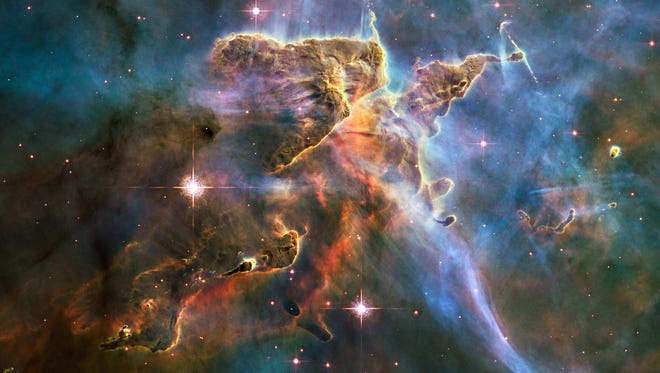
NASA's Hubble Space Telescope captured this billowing cloud of cold interstellar gas and dust rising from a tempestuous stellar nursery located in the Carina Nebula, 7,500 light-years away in the southern constellation Carina. Hubble's Wide Field Camera 3 observed the pillar on Feb. 1-2, 2010. The colors in this composite image correspond to the glow of oxygen (blue), hydrogen and nitrogen (green), and sulfur (red).
NASA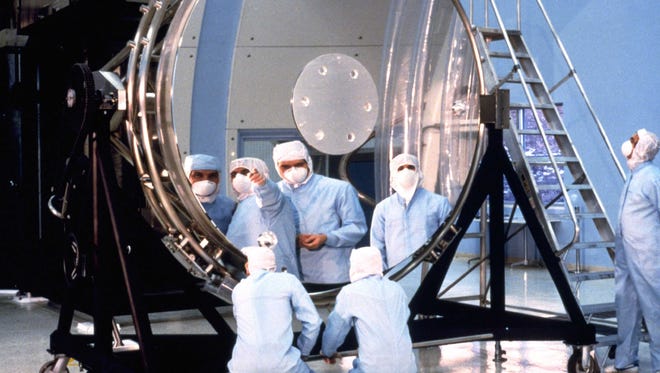
Workers study HubbleÕs main, eight-foot mirror. Hubble, like all telescopes, plays a kind of pinball game with light to force it to go where scientists need it to go. When light enters Hubble, it reflects off the main mirror and strikes a second, smaller mirror. The light bounces back again, this time through a two-foot hole in the center of the main mirror, beyond which HubbleÕs science instruments wait to capture it. In this photo, the hole is covered up.
NASA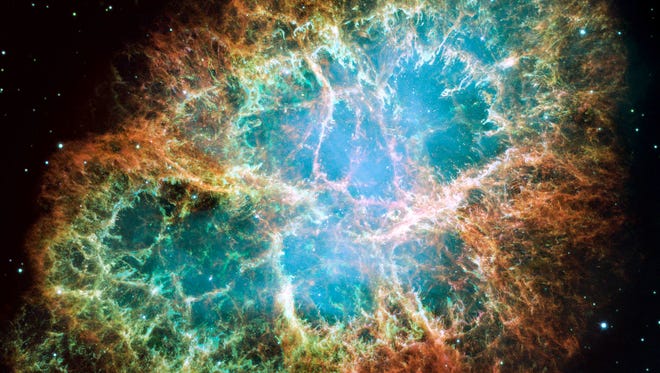
This mosaic image, taken by NASA's Hubble Space Telescope shows the Crab Nebula, a six-light-year-wide expanding remnant of a star's supernova explosion. The Crab Nebula derived its name from its appearance in a drawing made by Irish astronomer Lord Rosse in 1844, using a 36-inch telescope. The composed image was assembled from 24 individual Wide Field and Planetary Camera 2 exposures taken in October 1999, January 2000, and December 2000.
NASA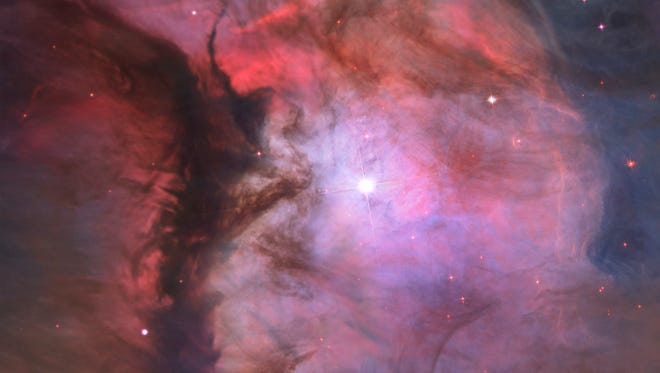
A Hubble panoramic view of Orion Nebula reveals thousands of stars.
NASA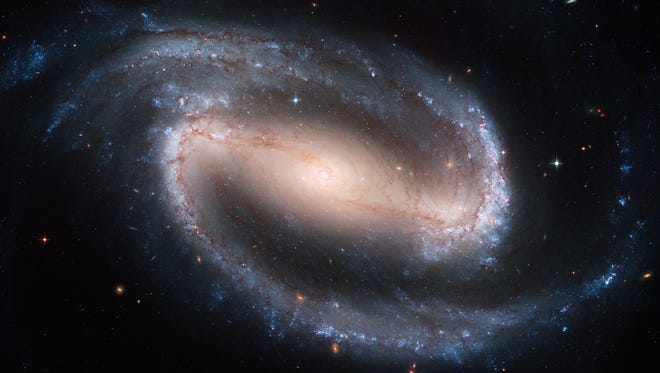
The Hubble telescope captured this display of starlight, glowing gas, and silhouetted dark clouds of interstellar dust of the barred spiral galaxy NGC 1300. Barred spirals differ from normal spiral galaxies in that the arms of the galaxy do not spiral all the way into the center, but are connected to the two ends of a straight bar of stars containing the nucleus at its center.
NASA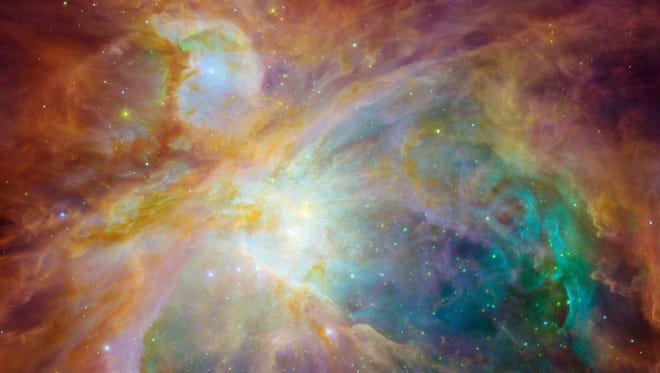
this image from NASA's Spitzer and Hubble Space Telescopes looks more like an abstract painting than a cosmic snapshot. The magnificent masterpiece shows the Orion nebula in an explosion of infrared, ultraviolet and visible-light colors. It was "painted" by hundreds of baby stars on a canvas of gas and dust, with intense ultraviolet light and strong stellar winds as brushes.
NASA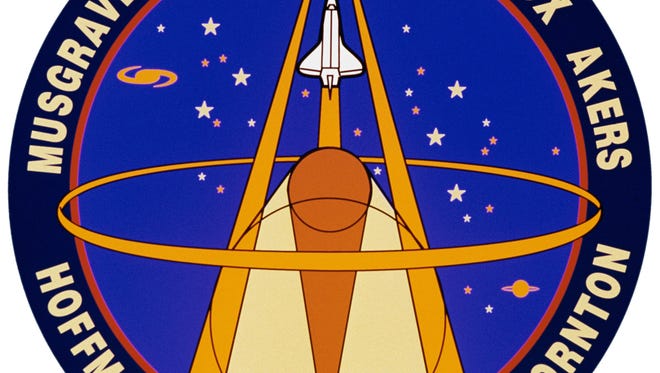
Space shuttle Endeavour launched mission STS-61 on Dec.2, 1993 on Hubble Space Telescope servicing mission one.
NASA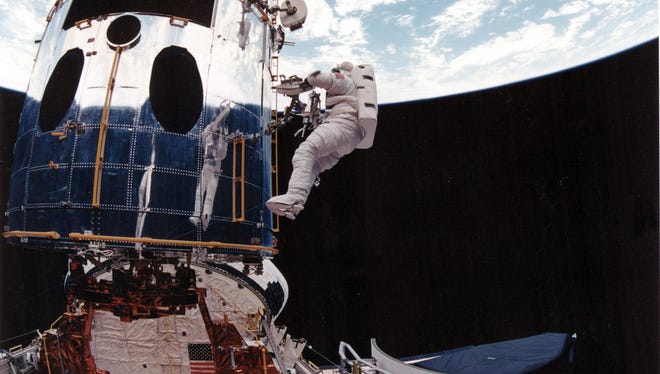
Astronaut F. Story Musgrave, is reflected in the shiny surface of the Hubble Space Telescope as he works with a portable foot restraint on Dec. 7, 1993.
NASA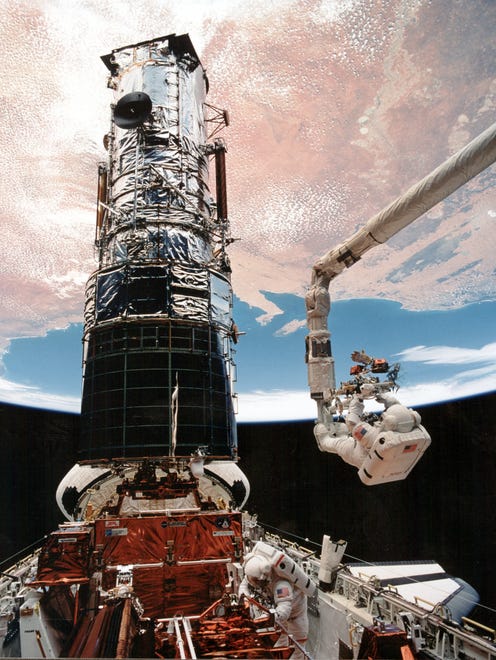
Astronaut F. Story Musgrave, anchored on the end of the Remote Manipulator System arm, prepares to be elevated to the top of the towering Hubble Space Telescope on Dec. 9, 1993, to install protective covers on magnetometers.
NASA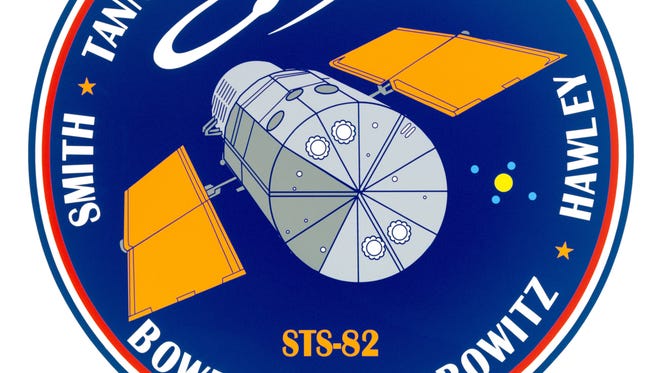
Space shuttle Discovery launched mission STS-82 on Feb. 11, 1997 for Hubble Space Telescope servicing mission two.
NASA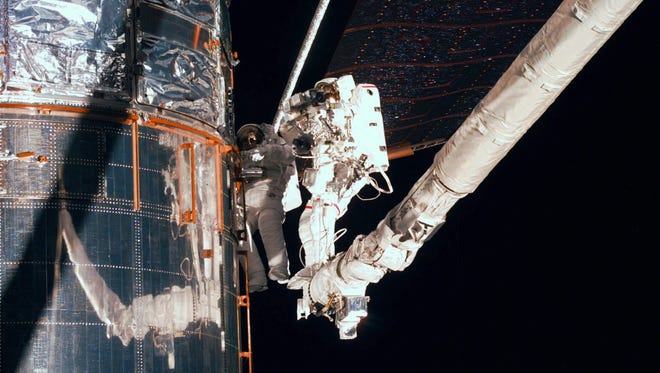
Making use of the remote manipulator system, astronauts Mark Lee, left, and Steven Smith repair the Hubble Space Telescope's peeling thermal insulation, the result of seven years of sun exposure, during space shuttle Discovery's servicing mission to the observatory on Feb. 18, 1997.
NASA Via AP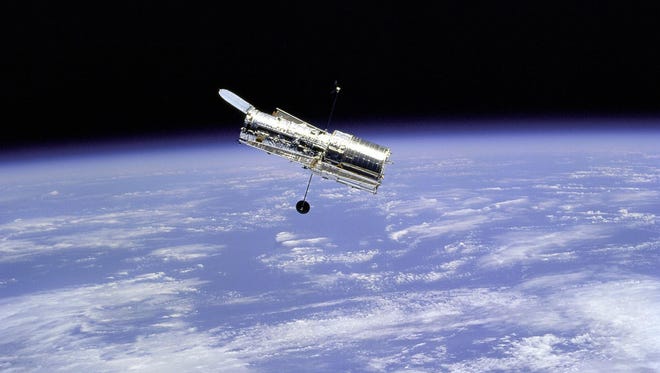
The Hubble Space Telescope is seen from the Space Shuttle Discovery in 1997.
NASA Via Agence France-Presse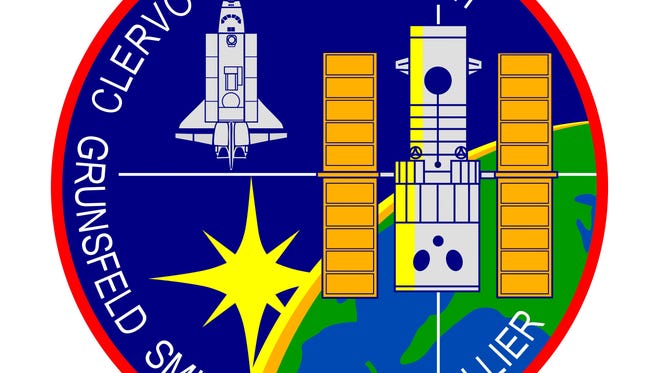
Space shuttle Discovery launched mission STS-103 on Dec. 19, 1999, for Hubble Space Telescope servicing mission three.
NASA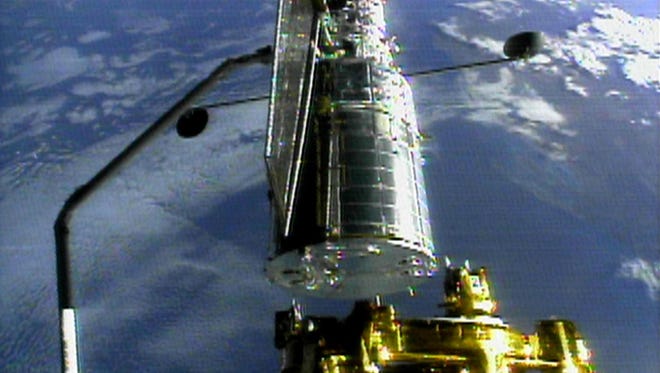
The Hubble space telescope is held by space shuttle Discovery's robot arm on Dec. 25, 1999 in preparation for its release from the shuttle. Discovery's seven person international crew redeployed the telescope after three days of repairs on this mission.
Agence France-Presse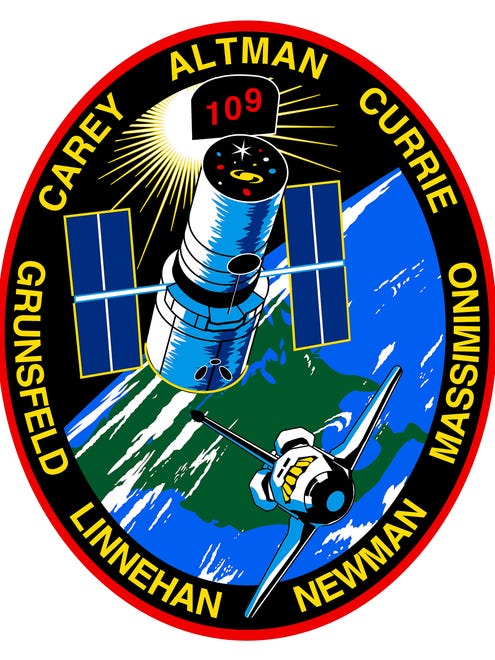
Space shuttle Columbia launched mission STS-109 on March 12, 2002 for Hubble Space Telescope servicing mission four.
NASA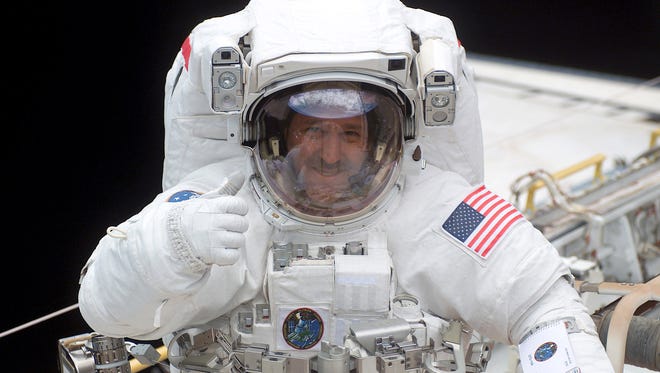
Astronaut John Grunsfeld signals to a crew mate inside the cabin while working in the payload bay of space shuttle Columbia during a spacewalk to install a new solar wing on the Hubble Space Telescope on March 4, 2002.
NASA Via AP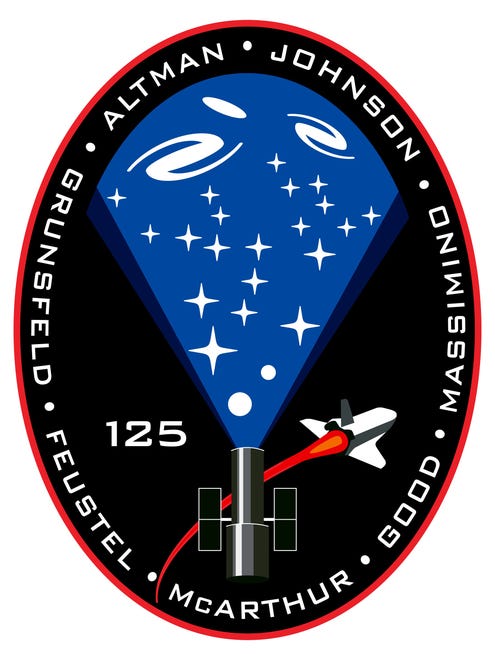
Space shuttle Atlantis launched missions STS-125 on May 11, 2009 on Hubble Space Telescope servicing mission five.
NASA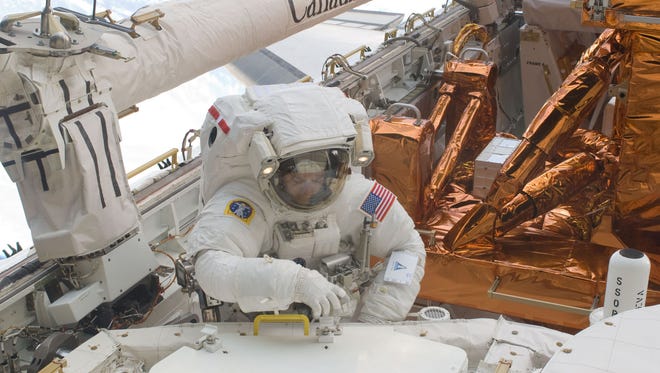
Mike Massimino works to refurbish and upgrade the Hubble Space Telescope during mission STS-125 on May 17, 2009. The mission, aboard space shuttle Atlantis, was the last shuttle mission to repair the telescope.
NASA Via AP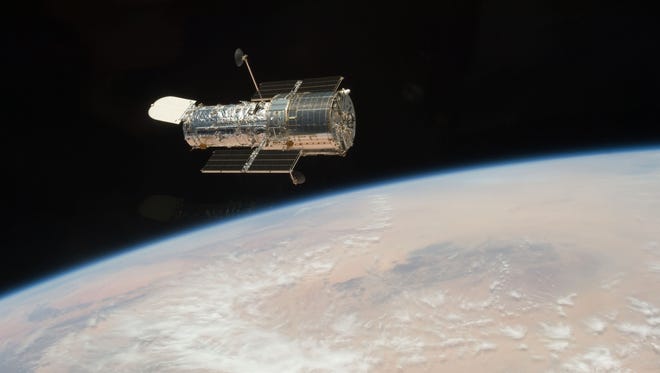
The Hubble Space Telescope is seen from the Space Shuttle Atlantis on May 19, 2009 as the two spacecraft continue their relative separation, after having been linked together for the better part of a week.
NASA Via AP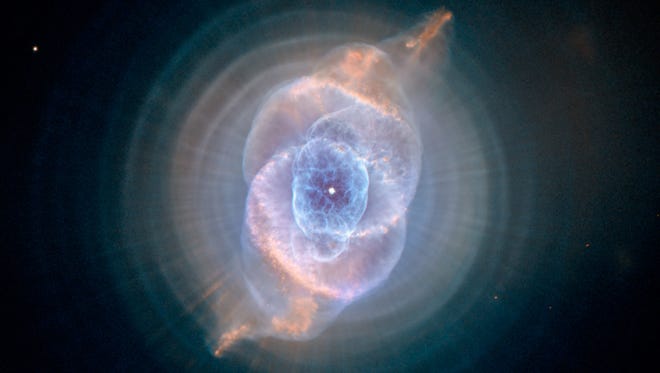
The Cat's Eye Nebula.
NASA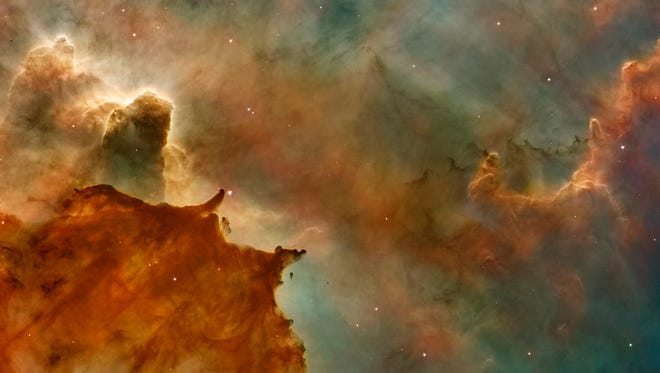
The Carina Nebula features great clouds of cold hydrogen resembling summer afternoon thunderheads. They tower above the surface of a molecular cloud on the edge of the nebula.
NASA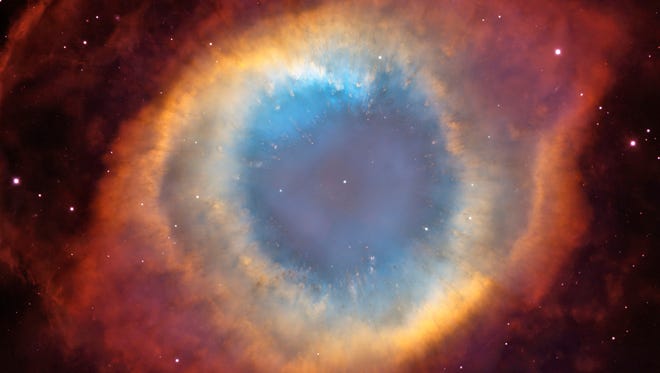
A Helix Nebula recorded by the Hubble Space Telescope.
NASA